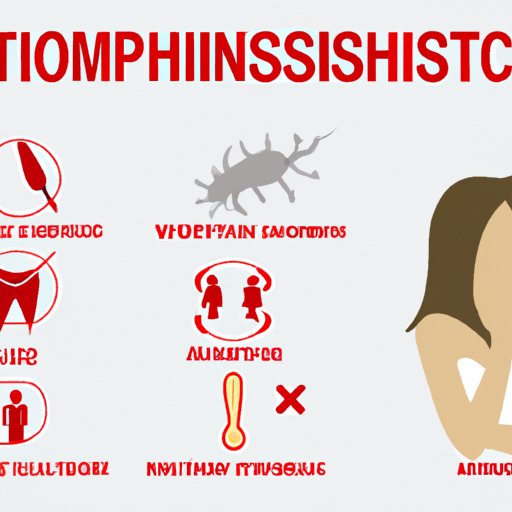
Understanding Trichomoniasis: What You Need to Know About This Common STI
Trichomoniasis is a sexually transmitted infection (STI) caused by a parasite called Trichomonas vaginalis. It is one of the most common STIs among sexually active individuals and can affect both men and women. Trichomoniasis is easily spread from person to person during sexual activity, and it can also be passed from a pregnant woman to her baby during childbirth. This article aims to provide you with a comprehensive guide on how trichomoniasis is contracted, its symptoms, risk factors, and available treatments.
Trichomoniasis 101: What You Need to Know About This STI and How It’s Spread
Trichomoniasis is a curable STI that affects the reproductive tract in both males and females. It is caused by the protozoan parasite Trichomonas vaginalis, which thrives in warm and moist environments such as the vaginal area, penis, urethra or prostate gland. The prevalence of trichomoniasis varies significantly among populations and geographic areas. Individuals who engage in unprotected sexual activities, especially with multiple partners, are at high risk of getting trichomoniasis.
The signs and symptoms of trichomoniasis include discomfort during sex, genital itching, painful urination, and vaginal discharge. However, some people with trichomoniasis may not have any symptoms at all. It is vital to seek medical attention if you experience these symptoms and suspect you may have contracted trichomoniasis.
From Transmission to Treatment: Understanding Trichomoniasis
Early diagnosis and treatment of trichomoniasis can prevent long term complications such as pelvic inflammatory disease (PID) in women and infertility in both men and women. There are several treatment options for trichomoniasis, including antibiotics such as metronidazole and tinidazole. It is crucial to complete the entire course of treatment, including any prescribed follow-up testing, to ensure that the parasite is eradicated completely.
The diagnosis of trichomoniasis may be challenging in some cases since the symptoms can be similar to other STIs such as chlamydia and gonorrhea. To confirm trichomoniasis diagnosis, health care professionals typically perform laboratory tests on a sample of vaginal or urethral discharge to detect the presence of the organism.
Unpacking Trichomoniasis: The Causes and Risk Factors of This Common STI
Trichomoniasis is more prevalent among women than men, possibly because of the unique physiology of the female genital tract, which creates a conducive environment for the protozoan parasite. Other factors that contribute to an increased risk of trichomoniasis include having a weakened immune system, having unprotected sexual encounters with multiple partners, or having a history of sexually transmitted infections.
In socioeconomically deprived and underserved communities, trichomoniasis tends to be more prevalent. This could be due to several factors, including limited access to health care and education, poverty, limited social support, and lack of proper hygiene practices.
Breaking it Down: How Trichomoniasis Is Contracted and How to Protect Yourself
Trichomoniasis is primarily transmitted through sexual contact with an infected individual. This includes vaginal sex, anal sex, and genital-to-genital contact. It is also possible for a pregnant woman to transmit trichomoniasis to her baby during childbirth. The use of latex condoms during sexual activity can decrease the likelihood of contracting trichomoniasis. However, no protection method can provide complete prevention since the parasite can infect the area that is not covered by the condom.
The most efficient way of preventing trichomoniasis is to practice safe sex, including regular STI testing, limiting sexual partners, and using barrier protection such as condoms. Abstinence from sex is the only absolute way to prevent trichomoniasis and other STIs completely.
The Infamous ‘Trich’: How to Spot the Symptoms and Prevent Infection
The symptoms of trichomoniasis can be mild and may not be noticeable. However, it is crucial to seek medical attention if you experience any discomfort during sex or experience abnormal vaginal discharge or irritation related to your genital area.
Avoid douching, which can irritate the vaginal area. Practice good genital hygiene, including wiping from front to back after using the bathroom and ensuring you are dry after washing. It is advisable to abstain from sexual activity until you have healed and taken the medication prescribed by your healthcare provider.
The Lowdown on Getting Trichomoniasis: A Comprehensive Guide to This Sexually Transmitted Infection
This article has provided a comprehensive overview of trichomoniasis, a prevalent STI among sexually active individuals worldwide. We have discussed how it’s transmitted, its symptoms, treatments, and prevention measures. Anyone sexually active is at risk of contracting trichomoniasis, but the risk can be managed with the correct approach. Seeking medical attention if one suspects that they may have contracted trichomoniasis, practicing safe sex measures, and having regular STI testing is crucial in preventing the transmission of trichomoniasis.
Conclusion
Trichomoniasis is a common STI caused by the Trichomonas vaginalis parasite. It is spread through sexual contact and can cause a range of uncomfortable symptoms. However, the good news is that trichomoniasis is curable with the right treatment. Prevention methods, including practicing safe sex and getting regular STI testing, are essential in managing the risk of contracting trichomoniasis.




